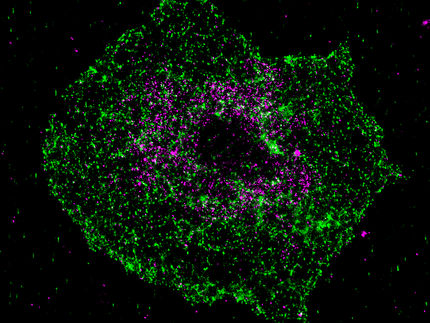Saint Louis University investigators perfect new version of blood-regulator thrombin
Research harnesses enzyme's anti-blood clotting abilities
In research led by Enrico Di Cera, M.D., chair of the department of biochemistry and molecular biology at Saint Louis University School of Medicine, molecular biologists have discovered a way to harness the enzyme thrombin's anti-blood clotting properties. The finding opens the door to new medications that will treat diseases related to thrombosis.
Blood clotting has long ensured our survival, stopping blood loss after an injury. On the other hand, if triggered in the wrong conditions, clotting can lead to debilitating or fatal conditions like heart attack, stroke and deep vein thrombosis.
Funded by the National Institutes of Health, and published in The Journal of Biological Chemistry (Vol. 285. No. 25), researchers zeroed in on thrombin, a vitamin K-dependent enzyme key to blood coagulation.
An unusual enzyme, thrombin performs distinct and even opposing functions, acting as a pro-coagulant, pro-thrombotic but also as an anti-coagulant factor depending on which target protein – fibrinogen, PAR1 or protein C – becomes activated in the blood. Researchers studied thrombin to decipher the structure-function code that enables this protein to do so many different things.
Tackling this problem far below the level of tissue and organs, molecular biologists looked deep inside the structure, examining thrombin's amino acids to note how they behave and interact with each other.
Using protein engineering, researchers produced mutations in the enzyme's amino acid sequence, carefully taking out pieces and replacing them, a few at a time, to find the exact locations that influence the function of thrombin. Once they found these "hot spots," researchers went even further – trying each of the 20 natural amino acids to see which mutation would allow them to turn on and off the pro-coagulant, pro-thrombotic and anti-coagulant functions.
In earlier research, Di Cera's team did just that. They engineered thrombin to promote activity toward protein C – the anticoagulant target protein – and minimize activity toward fibrinogen and PAR1 – the procoagulant and prothrombotic targets.
Once clinical trials are performed, researchers hope to have developed an alternative to heparin, a blood thinner that is used to prevent blood clots and is often used before surgery, but which also causes allergic reactions, dosage challenges and bleeding.
Most read news
Topics
Organizations
Other news from the department science

Get the life science industry in your inbox
By submitting this form you agree that LUMITOS AG will send you the newsletter(s) selected above by email. Your data will not be passed on to third parties. Your data will be stored and processed in accordance with our data protection regulations. LUMITOS may contact you by email for the purpose of advertising or market and opinion surveys. You can revoke your consent at any time without giving reasons to LUMITOS AG, Ernst-Augustin-Str. 2, 12489 Berlin, Germany or by e-mail at revoke@lumitos.com with effect for the future. In addition, each email contains a link to unsubscribe from the corresponding newsletter.




















































